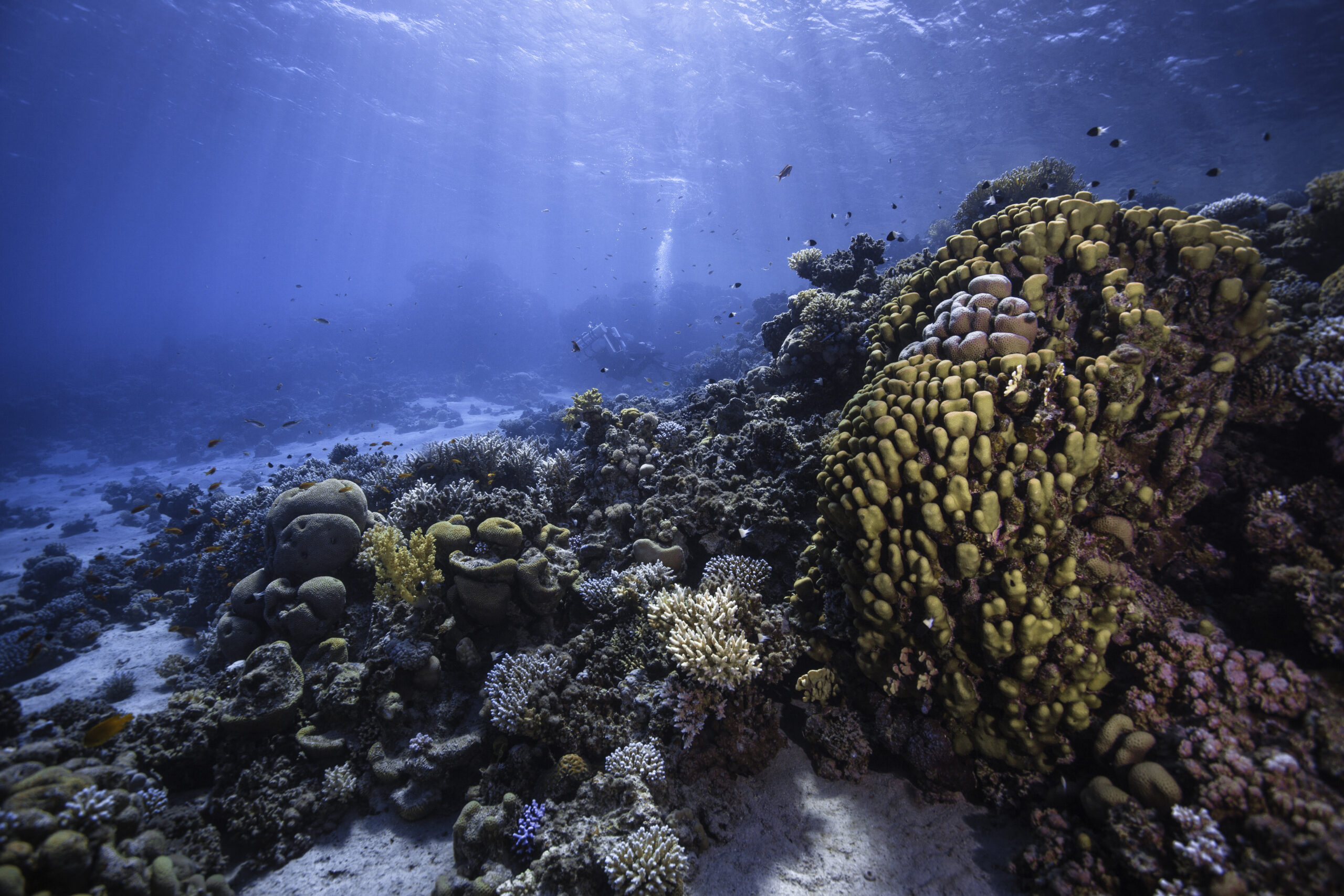What is 30×30?
Covering 70% of our planet, the Ocean produces over 50% of the oxygen we breathe, it regulates the planet’s climate, it provides us with food, medication, jobs, recreation, energy… without it, life on Earth would literally not be possible. As Arthur C. Clarke put it bluntly – “How inappropriate to call this planet Earth when it is quite clearly Ocean.”
In order for the Ocean to keep providing these ecosystem services to us, we need to protect it against overfishing, habitat destruction, pollution and many other forms of pressures placed by humans. The United Nations have attempted to protect the Ocean before, by setting Aichi Biodiversity Target 11 in 2010, that aimed to conserve 10% of coastal and marine areas by 2020. Sadly, this target was not achieved.
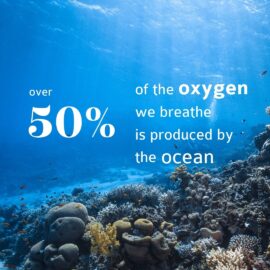 Science now points to 30% as the minimum area of the Ocean that needs to be protected for both humans and nature to reap the benefits. Encouragingly, scientists have also estimated that the global economy would greatly benefit from a network of marine protected areas (MPAs) compared to the status quo. In numbers, a review of 120 MPAs has shown that biomass (the total weight of all living organisms within an area) can improve by 446% and biodiversity (the number of different species within an area) by 20% in only 5 years from the onset of protection measures!
Science now points to 30% as the minimum area of the Ocean that needs to be protected for both humans and nature to reap the benefits. Encouragingly, scientists have also estimated that the global economy would greatly benefit from a network of marine protected areas (MPAs) compared to the status quo. In numbers, a review of 120 MPAs has shown that biomass (the total weight of all living organisms within an area) can improve by 446% and biodiversity (the number of different species within an area) by 20% in only 5 years from the onset of protection measures!
To redeem Aichi Target 11 and ensure that the Sustainable Development Goal 14 is met, the United Kingdom launched the Global Ocean Alliance 30×30 initiative, calling for 30% of the global ocean to be protected by 2030. This initiative is the marine portion of the wider 30by30 movement set by the High Ambition Coalition for Nature and People, co-chaired by Costa Rica, France and the UK, which focuses on protecting 30% of both land and sea by 2030. So far, over 60 countries have joined the High Ambition Coalition and 43 countries have joined the Global Ocean Alliance.
How do you protect an area in the sea?
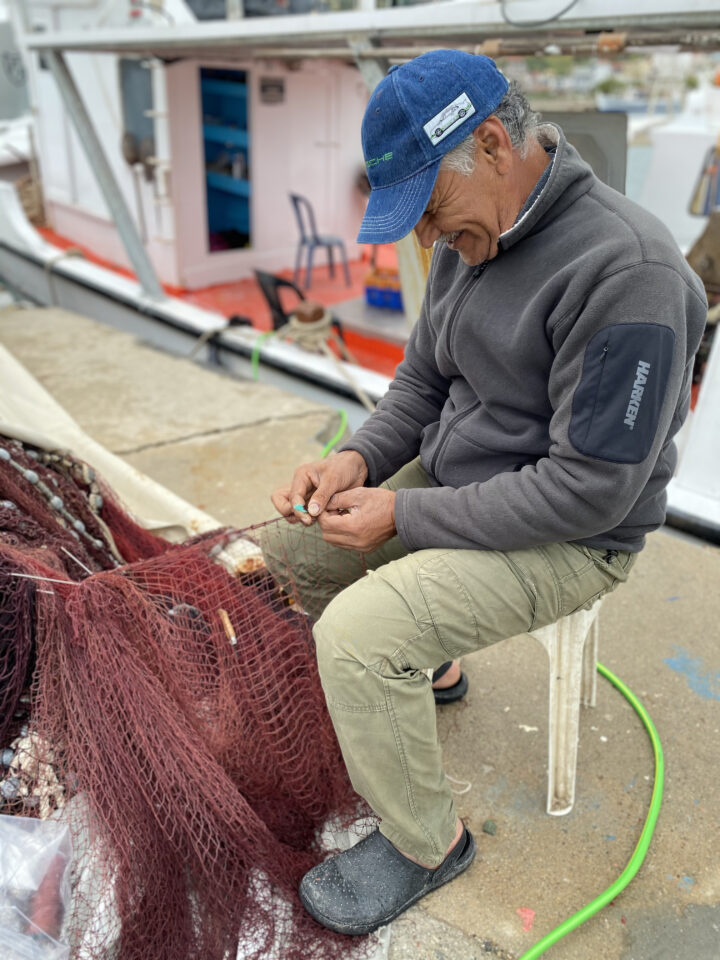 Designating MPAs is no easy task. It requires both the government and the local communities, whose livelihoods depend on the proposed area, to support the designation. Each area is a concoction of complex socioeconomic and political variables. There is no one scenario fits all. In some cases, the designation exists on paper only – the so called ‘paperparks’. Other times, the areas proposed to become MPAs are simply impossible to patrol against human pressures. Take high seas for example, which constitute 61% of the global ocean.
Designating MPAs is no easy task. It requires both the government and the local communities, whose livelihoods depend on the proposed area, to support the designation. Each area is a concoction of complex socioeconomic and political variables. There is no one scenario fits all. In some cases, the designation exists on paper only – the so called ‘paperparks’. Other times, the areas proposed to become MPAs are simply impossible to patrol against human pressures. Take high seas for example, which constitute 61% of the global ocean.
Currently, only 7.68% of the ocean is either a designated or proposed MPA, with only 2.7% benefiting from efficient protection measures.
There are two principal pathways to designating an MPA – top-down (the government or governing body places a certain area under designation through legislation) and bottom-up (the community, often through environmental NGOs, lobbies for the area to be protected). In both cases, you need to convince people that the MPA will bring higher profits than the present situation does, despite the short-term loses the designation may cause. To make this even more challenging, people are not keen to protect what they cannot see. The Ocean is vast, so it was long assumed that there ‘are plenty of fish in the sea’. NGOs need to work extra hard to educate communities and politicians alike of the pressures the Ocean faces. Very often, creativity is key!
Mission Santorini – Attracting international publicity
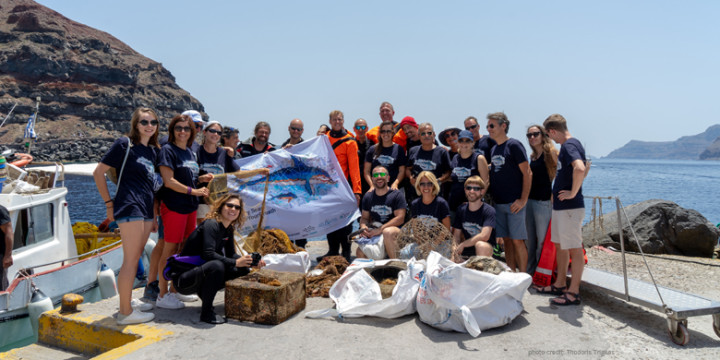 Healthy Seas supports such bottom-up actions through partnerships, by shedding light onto the magnitude of the problem that ghost nets cause, often leaving fishing communities aghast once the nets are landed on shore. In 2018, together with Ghost Diving and Atlantis Dive Centre and with generous support from Carvico S.p.A, Healthy Seas organised a major ghost net recovery from an area in Santorini, Greece, which has been proposed for designation by Pierre-Yves Cousteau and Apostolos Stylianopoulos (Atlantis Dive Centre), strongly supported by the local community.
Healthy Seas supports such bottom-up actions through partnerships, by shedding light onto the magnitude of the problem that ghost nets cause, often leaving fishing communities aghast once the nets are landed on shore. In 2018, together with Ghost Diving and Atlantis Dive Centre and with generous support from Carvico S.p.A, Healthy Seas organised a major ghost net recovery from an area in Santorini, Greece, which has been proposed for designation by Pierre-Yves Cousteau and Apostolos Stylianopoulos (Atlantis Dive Centre), strongly supported by the local community.
Aeolian islands Mission – A story of hope
There are many more brilliant examples of community efforts to designate MPAs around the world. Another such project are the Aeolian islands in Italy, that were recently declared a Hope Spot by Dr Sylvia Earl’s Mission Blue. Healthy Seas, together with Ghost Diving, supported conservation efforts there in 2018 and 2019, through raising awareness in schools, removing ghost nets and encouraging local fishers to bring their old nets for recycling on the island of Salina.
Dr Giulia Bernardi from the Blue Marine Foundation, who is actively campaigning to designate the Aeolian islands as an MPA, says “Look, if you are going to the field, into the land, and you have a field with tomatoes, you know that you cannot take the green tomatoes because they are not good. But in the same way you have to protect your sea. The sea is more difficult to understand, to perceive the urgency because you can’t see what is below the water.”
Journey to Ithaca – Healthy Seas’ record-breaking mission
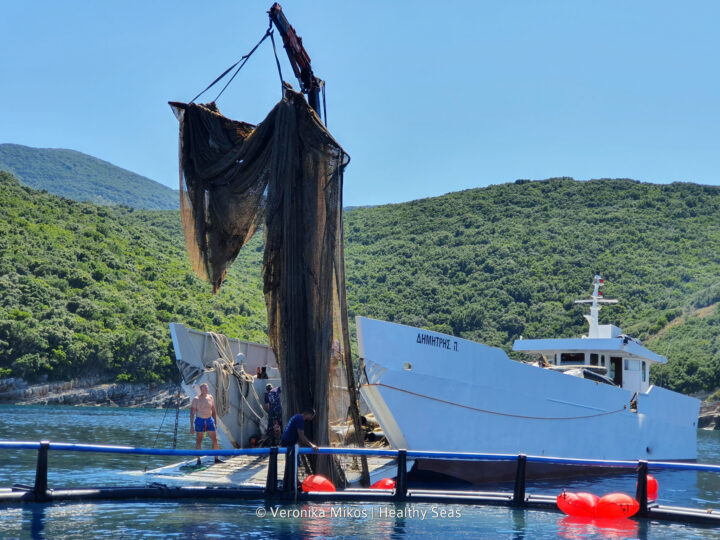 Sometimes, when an environmental catastrophe strikes, communities cannot wait for MPA designations and bureaucratic processes to make a difference! The 30×30 initiative at its heart is about taking action by governments, as well as individuals and NGOs.
Sometimes, when an environmental catastrophe strikes, communities cannot wait for MPA designations and bureaucratic processes to make a difference! The 30×30 initiative at its heart is about taking action by governments, as well as individuals and NGOs.
In 2020, a concerned citizen and diver, George Lilas, publicized photos of an abandoned fish farm wreaking environmental havoc on Ithaca, Greece since 2012. Healthy Seas together with partners Ghost Diving and Enaleia, responded to Lilas’ social media post and mobilized all its forces, bringing together volunteers, local authorities and sponsors that wanted to help restore the pristine beauty of the area.
On World Oceans Day 2021, together with many other groups, Healthy Seas kicked off its biggest cleanup operation yet. In just over a week, a team of 45, mostly volunteers including 20 divers, removed 76 tons of debris from the sea, coastline, and 4 beaches on the Southwest of Ithaca. Overall, the team recovered 5 tons of fishing nets, 32 tons of metal, 39 tons of plastic, including 150 bags full of polystyrene foam beads.
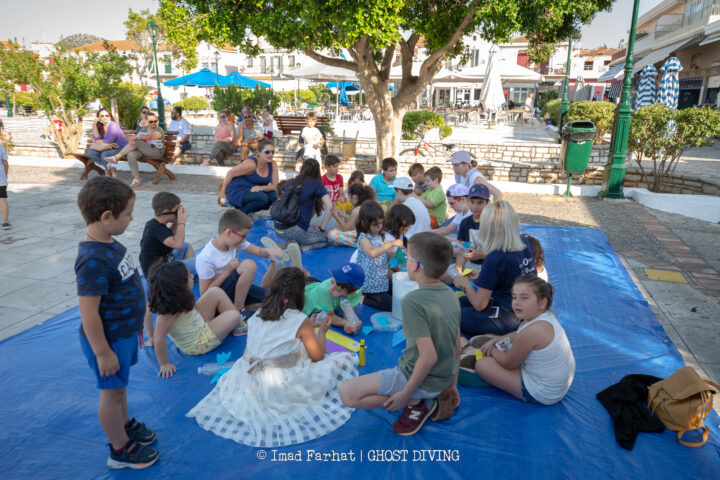
Besides the obvious and profound difference the project on Ithaca had on the natural environment, it is also a shining example of cooperation and community involvement. The time is now to help save our Oceans.
So, how can we all help?
There are many ways we can all contribute to nature’s recovery, such as reducing our carbon footprint, choosing to avoid single-use plastic items, supporting NGOs through raising awareness of environmental issues, organising beach cleans and many more. In her book, ‘Future Sea: How to Rescue and Protect the World’s Oceans’, Deborah Rowan Wright proposes a plethora of ways to give back to our seas, from small everyday actions to modernising the Law of the Sea. Most importantly, we can play our part by reminding ourselves and others that there is still hope. Nature can rebuild itself, we just have to help her bit by bit, 30 by 30.
By Gala Podgornik
Marine Biologist & Conservationist



